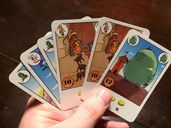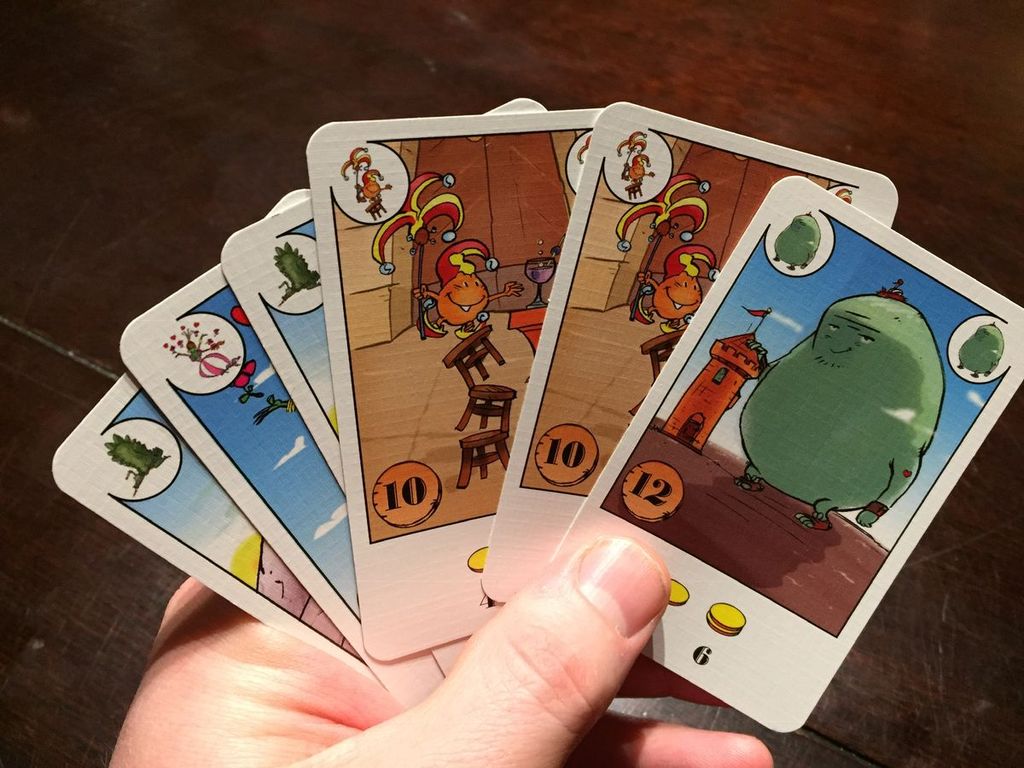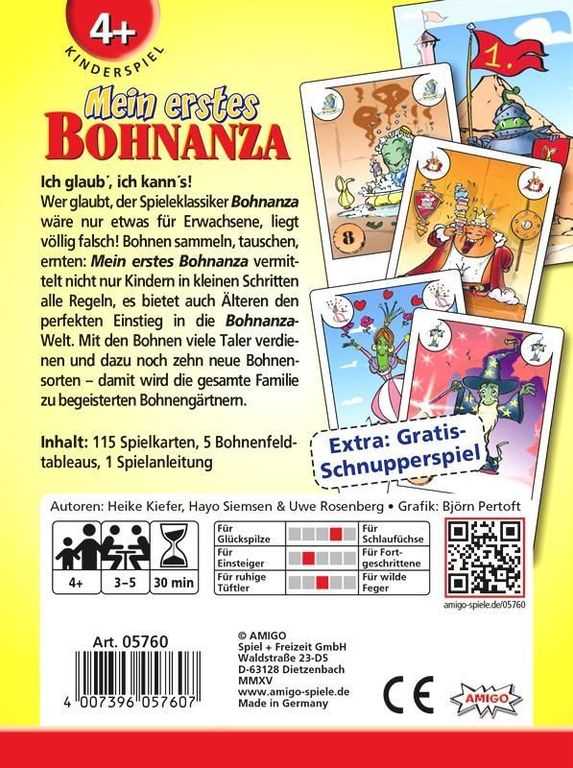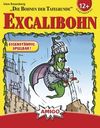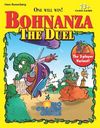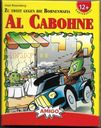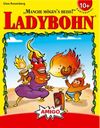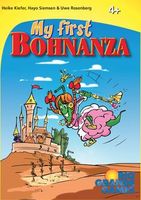
My First Bohnanza
My First Bohnanza serves as both an introduction to Bohnanza and as a children's game in its own right, with the goal of the game being the same as its parent: Have the most Talers at the end of play.
As in the original Bohnanza, the game includes multiple types of beans, with each bean having a number on it to indicate how many copies are in the game as well as a "beanometer" at the bottom of the card to show you how many cards of this type you need to harvest in order to collect Talers. My First Bohnanza has simplified beanometers, with four types of beans having only a single exchange value — e.g., five Gemeine (common) beans get you one Taler — and six types of beans having two exchange values.
... read moreMy First Bohnanza serves as both an introduction to Bohnanza and as a children's game in its own right, with the goal of the game being the same as its parent: Have the most Talers at the end of play.
As in the original Bohnanza, the game includes multiple types of beans, with each bean having a number on it to indicate how many copies are in the game as well as a "beanometer" at the bottom of the card to show you how many cards of this type you need to harvest in order to collect Talers. My First Bohnanza has simplified beanometers, with four types of beans having only a single exchange value — e.g., five Gemeine (common) beans get you one Taler — and six types of beans having two exchange values. Games with the youngest players (or newcomers to the Bohnanza universe) should use the single beanometer cards with the other cards forming a Taler stack.
To play, each player gets five cards, which they lay in a face-up row, and a beanfield tile that shows spots for two types of beans. On a turn, a player must plant the first (leftmost) card in one of her fields and she can choose to plant a second. Players try to group cards of the same type in the same field, but they can cover beans of different types, if needed. The player then reveals two cards from the deck and either keeps them or trades them (and cards from her hand, if desired) for cards held by other players; all traded cards must be planted. To end her turn, the player draws three cards and adds them to her row.
As soon as a player has the proper number of bean cards in order in one of her fields, she harvests them, placing these cards in the discard pile and collecting a Taler from the stack. If those cards covered beans of another type, she can then start building on those beans again. After going through the deck 1-3 times (depending on the number of players), the game ends and whoever has the most Talers wins.
Once players have played My First Bohnanza a few times, you can swap the single beanometer cards for the double beanometer cards, which now gives players a choice of when to harvest. Subsequently, you can combine the two decks, which introduces the rule about using one of the bean cards to serve as the Taler (which adjusts the quantity of that type of bean in the deck). With additional plays, you can add in the remaining rules of Bohnanza, such as needing to harvest for no Talers when planting, paying for a third beanfield, keeping your cards in hand, and not being able to harvest a field with only one card.
